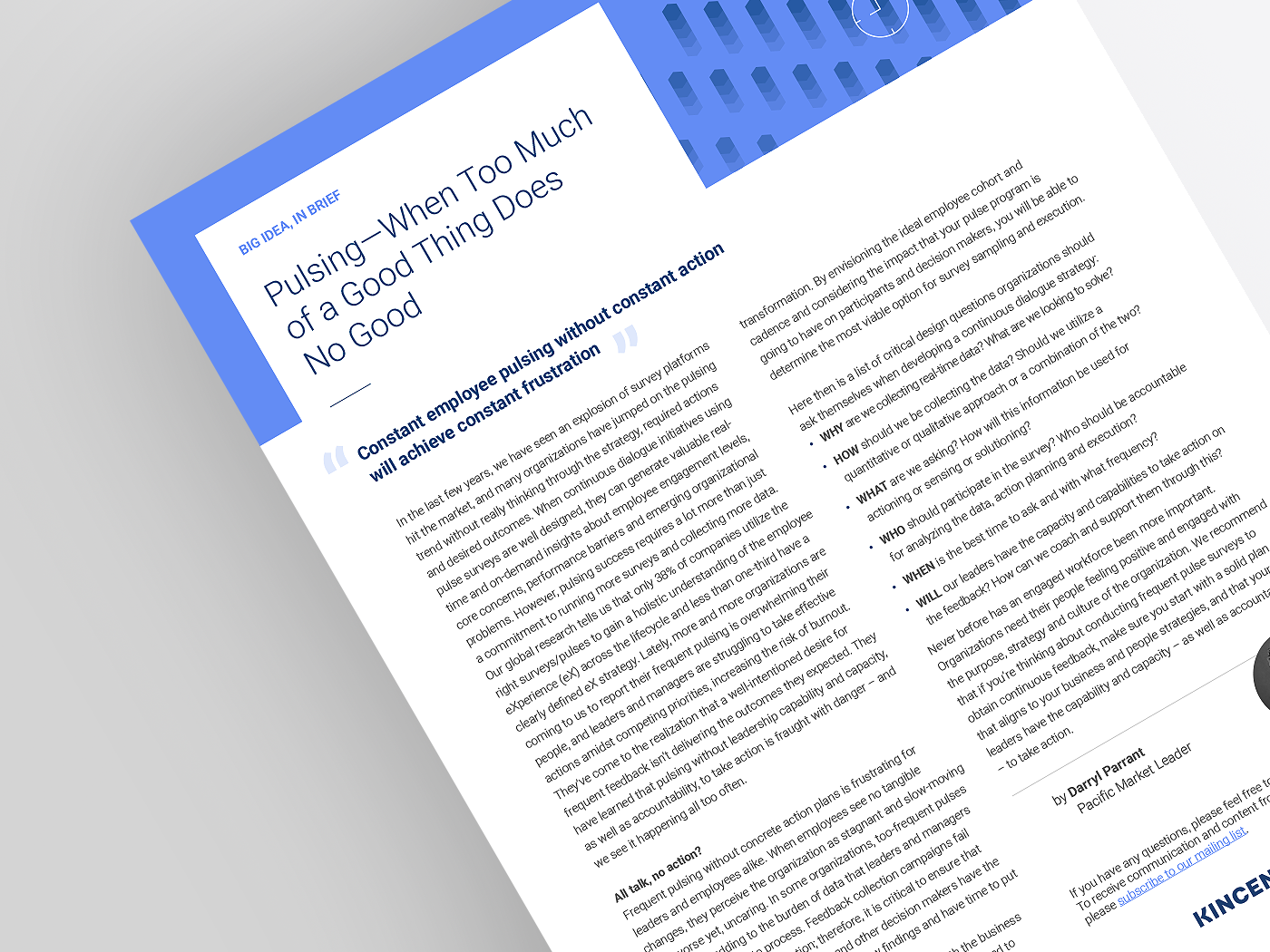
In the last few years, we have seen an explosion of survey platforms hit the market, and many organizations have jumped on the pulsing trend without really thinking through the strategy, required actions and desired outcomes. When continuous dialogue initiatives using pulse surveys are well designed, they can generate valuable real- time and on-demand insights about employee engagement levels, core concerns, performance barriers and emerging organizational problems. However, pulsing success requires a lot more than just a commitment to running more surveys and collecting more data. Our global research tells us that only 38% of companies utilize the right surveys/pulses to gain a holistic understanding of the employee eXperience (eX) across the lifecycle and less than one-third have a clearly defined eX strategy. Lately, more and more organizations are coming to us to report their frequent pulsing is overwhelming their people, and leaders and managers are struggling to take effective actions amidst competing priorities, increasing the risk of burnout. They’ve come to the realization that a well-intentioned desire for frequent feedback isn’t delivering the outcomes they expected. They have learned that pulsing without leadership capability and capacity, as well as accountability, to take action is fraught with danger – and we see it happening all too often.
Frequent pulsing without concrete action plans is frustrating for leaders and employees alike. When employees see no tangible changes, they perceive the organization as stagnant and slow-moving – or worse yet, uncaring. In some organizations, too-frequent pulses are simply adding to the burden of data that leaders and managers do not have time to process. Feedback collection campaigns fail without follow-up and action; therefore, it is critical to ensure that leaders, managers, employees and other decision makers have the bandwidth and capacity to absorb new findings and have time to put improvement plans in place.
The best employee pulse programs are aligned with the business strategy and are designed to capture data that can be used to help manage real organizational challenges and drive cultural transformation. By envisioning the ideal employee cohort and cadence and considering the impact that your pulse program is going to have on participants and decision makers, you will be able to determine the most viable option for survey sampling and execution.
Here then is a list of critical design questions organizations should ask themselves when developing a continuous dialogue strategy:
Never before has an engaged workforce been more important. Organizations need their people feeling positive and engaged with the purpose, strategy and culture of the organization. We recommend that if you’re thinking about conducting frequent pulse surveys to obtain continuous feedback, make sure you start with a solid plan that aligns to your business and people strategies, and that your leaders have the capability and capacity – as well as accountability – to take action.
Want the latest insights delivered straight to your mailbox?